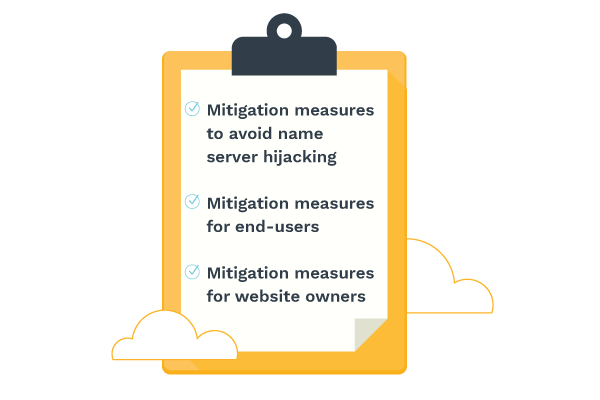IRANIAN HACKERS WERE FOUND USING DNS HIJACKING
Mysterious groups hijacks DNS records to reshape and hijack an organization’s inside traffic to take login certifications.
US network safety firm FireEye has uncovered a very modern hacking effort during which a thought Iranian gathering diverted traffic from organizations all around their globe through their own malignant servers, recording organization certifications for future assaults.
Impacted associations include telecoms, ISPs, web foundation suppliers, government, and delicate business elements across the Middle East, North Africa, Europe, and North America.
FireEye examiners accept an Iranian-based bunch is behind the assaults, despite the fact that there is no conclusive evidence for definite attribution right now.
Specialists said the substances designated by the gathering have no monetary worth, yet they would hold any importance with the Iranian government.
“It’s consistent with what we’ve seen Iran do before and the signs point there, but we just wanted to get this out because it is affecting dozens of entities,” says Ben Read, senior manager of cyber-espionage analysis at FireEye. “We have not seen the last of this.”
The most recent disease chain includes the utilization of a large-scale bound Microsoft Document downloaded from a space named “news-spot[.]live,” mimicking a genuine news report from Radio Free Europe/Radio Liberty about Iran’s robot strikes in December 2021.
WHAT IS DNS HIJACKING?
DNS hijacking is a redirection assault in which DNS questions to certified sites are captured to take a clueless client to deceitful pages under an enemy’s influence. Not at all like reserve harming, DNS hijacking focuses on the DNS record of the site on the nameserver, instead of a resolver’s store.
A Domain Name System (DNS) is vital for all organizations that rely upon the web to create deals — it is a critical component to the exhibition and authenticity of an association’s electronic applications and cloud administrations. An escape clause in your DNS could mean the deficiency of clients, admittance to client qualifications by programmers, inaccessible substance, and client disappointment, to make reference to a couple. A DNS commandeering or User Redirection Attack is a typical kind of Domain server break that objectives a weakness in the strength of an organization’s space server framework.
PREVENTION

There are various preparatory advances you can take to further develop your DNS security to forestall DNS capturing. We have three classes of the fundamental relief measures:
- Alleviation Measures to Prevent Name Server Hijacking
Digital cheats target DNS switches and reconfigure them to divert traffic to malevolent areas on the web. The DNS name server is a pivotal asset that ought to have solid safety efforts to keep aggressors from hacking and sending off assaults on site clients.
- Introduce Firewalls Around Your DNS Resolver — Every DNS has resolvers, legitimates resolvers. Assailants might introduce counterfeit resolvers in the DNS to think twice about and to catch the genuine resolvers. To keep this from occurring, have the IT group place the genuine resolvers behind a firewall, and shut down all non-required DNS resolvers.
- Increment Restrictions on Access to Name Servers — An assailant could be an adversary inside your association. Thusly, the IT group ought to guarantee an actual security framework, multifaceted confirmation access, and a solid firewall to restrict admittance to the association’s DNS.
- Forestall Cache Poisoning — normal measures to forestall site store harming incorporate; randomizing client character, randomizing server source ports, and utilizing both upper and lower cases in your association’s area name.
- Fix the Known weaknesses, right away — cybercriminals exploit clear weaknesses to start assaults on DNS. Have your IT group look at the DNS for any weaknesses and quickly fix them up to forestall assaults.
- Stay away from Zone Transfers — DNS zone records are sensitive documents that contain information that is frequently focused on by assailants. The programmers might act like slave name servers mentioning for a zone move, which includes duplicating server zone records. To forestall this weakness, keep away from zone moves.
- Relief Measures for End-Users
Other than promoting items to seized traffic, DNS criminals additionally target client information and accreditations. Site clients can forestall capturing by much of the time changing their passwords, introducing and refreshing their PC against infections, and utilizing solid virtual confidential organizations.
- Relief Measures for Website Owners

In the event that your association utilizes a Domain Name Registrar, your IT group can find the accompanying ways to forestall DNS seizing:
- Guarantee Secure Access — DNS access ought to be restricted to a couple of individuals from the IT group, who ought to have a multifaceted confirmation while getting to the space name server recorder. This action will altogether keep away from DNS hacking. If helpful for the IT group, a couple whitelisted Internet Protocol locations ought to get to the space name recorder.
- Client Lock — To improve DNS security, some DNS recorders use client locks. The lock handicaps the choice to change DNS records except if the solicitation is produced using a specific IP address.
- Utilize A Domain Name Service supplier with DNSSEC — A DNSSEC utilizes computerized marks and public keys to confirm the legitimacy of DNS demands. Assuming that your DNS enlistment center offers DNSSEC, empower it to add a layer of security that makes it moving for assailants to catch and divert traffic from your site to a phony site.



